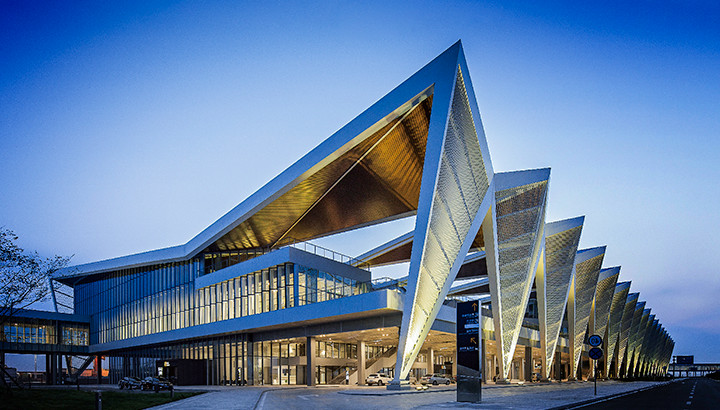
Product Performance
| Coating Variety | Product Description | Product Standard | Warranty Period |
|---|---|---|---|
| Liquid acrylic coatings/Liquid polyester coatings/Powder polyester coatings | High quality polyester,used for outdoor. | AAMA2603 Qualicoat ClassⅠ | 5 years warranty |
| Super durable powder coatings | High durable resin and inorganic pigments,used for outdoor high buildings. | AAMA2603 Qualicoat ClassⅡ | 10 years warranty |
| Fluorine modified polyester powder coatings | High durable resin and inorgainic pigments,used for outdoor high buildings. | AAMA2604 Qualicoat Class Ⅱ | 15 years warranty |
| PVDF Fluorocarbon coatings/PVDF Fluorocarbon powder coatings | 70% PVDF resin and inorganic pigments,most durable coating so far. | AAMA2605 Qualicoat Class Ⅲ | 20-30 years warranty |
Introduction to PVDF fluorocarbon coating
PVDF fluororesin coating is a kind of high-grade decorative material with super weather resistance, acid and alkali resistance made of polyvinylidene fluoride (PVDF) resin and acrylic resin plus inorganic composite pigment.The difference between PVDF fluorocarbon coating and other fluorine coatings
pvf
pvdf
peve
ptfe
Principle of weather resistance: the the fluorocarbon bond of fluorocarbon resin is the most stable chemical bond in the fluorocarbon bond organic synthesis compounds
a. The binding force of the fluorine-carbon (F-C) bond between the fluorine (F) and carbon (C) atoms with the largest negative charge is as high as 105.4 kcaI/mol, which means that it requires at least above 105.4 kcal/mol energy todestroy the fluorine-carbon (F-C) bond.
Reasons of color durability: the difference between inorganic composite pigments and organic pigments
| Inorganic composite pigment | Unit price (yuan/kg) | Organic pigment | Unit price (yuan/kg) |
|---|---|---|---|
| Black (Cu, Fe, Cr, Mn) | Adding 15% in 100 | Carbon black | Adding 4% in 20 |
| Yellow (Li, Ti) nickel titanium yellow | 65 | Iron yellow | 7 |
| Red (Cr) chrome red | 300 | Iron red | 7 |
| Blue (Co, Li) cobalt blue | 300 | Titanium blue | 50 |
| Green (Co) cobalt green | 300 | Titanium green | 50 |

